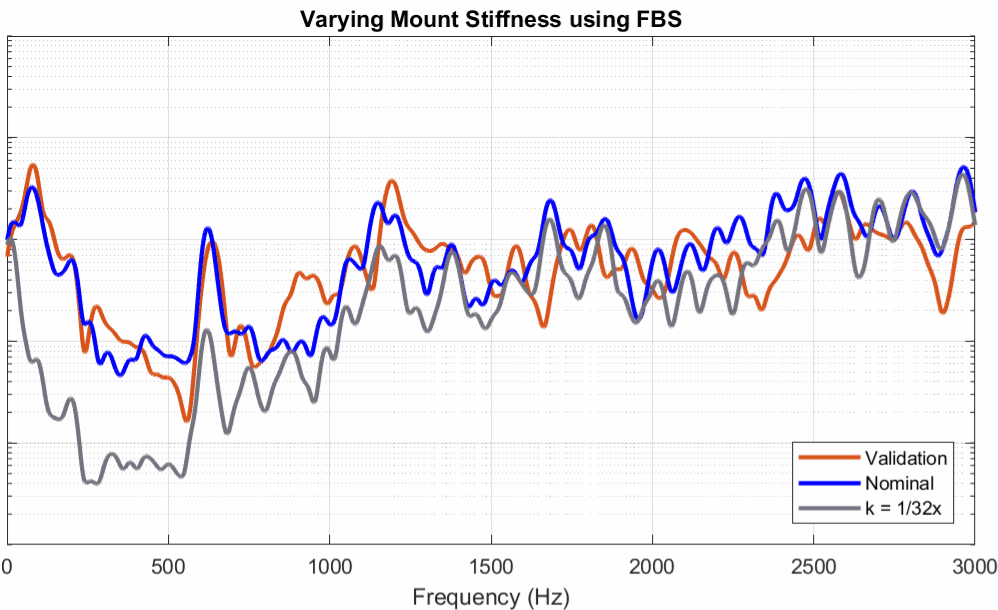Dynamic Substructuring
Simulate sound & vibration behaviour prior to prototype
Dynamic Substructuring (DS) is a powerful engineering concept to model and analyze dynamic systems in terms of its components or substructures. It derives from the ancient principle of “divide and conquer” (“divide et impera”), which suggests that large problems are most effectively governed by dividing them into smaller parts and choosing the best approach for each. Dynamic Substructuring does just that: it allows to model each component using the most quality- and cost-effective technique and “substructure” their dynamics together. This way, one can simulate the sound and vibration behaviour of the full assembly (the end-product), long before any physical prototype is available.
With Dynamic Substructuring, insights on full-vehicle NVH performance can be obtained much earlier, as already-available components can be measured and substructured to FE models of the rest of the vehicle.
VIBES uses Frequency Based Substructuring (FBS) to build up the transfer path of complex systems. FBS is the most versatile and cost-effective method for early-phase NVH engineering, as it uses FRF descriptions of subsystems which can be obtained in a variety ways. Vehicle chassis parts can be modelled numerically using standard FE simulation, whereas FRF models of complex active components (such as engines and mechatronic parts) are obtained by test-based modeling using DIRAC. Noise transfer functions (to the driver’s ears) are inserted with the same ease, and can be interchanged to simulate for different vehicle platforms. Finally. the mounts and bushings that connect the subsystems together are inserted in the substructuring procedure as dynamic stiffnesses. As the whole vibration chain is built up modularly, one can now optimize for new designs in a completely virtual way – long before any physical prototype is available!
- Substructures can be modelled and analyzed in the domain that is most appropriate. In particular, experimentally obtained (measured) substructures can be combined with numerical models, enabling hybrid modeling approaches.
- Models of different development groups can be shared and combined. Details of the component model can be kept proprietary, because the substructuring interaction only requires dynamic information of the interfacing points.
- Large systems can be optimized on a substructure-level with respect to their performance in the full product. Global sensitivities can be traced back to critical substructures.

